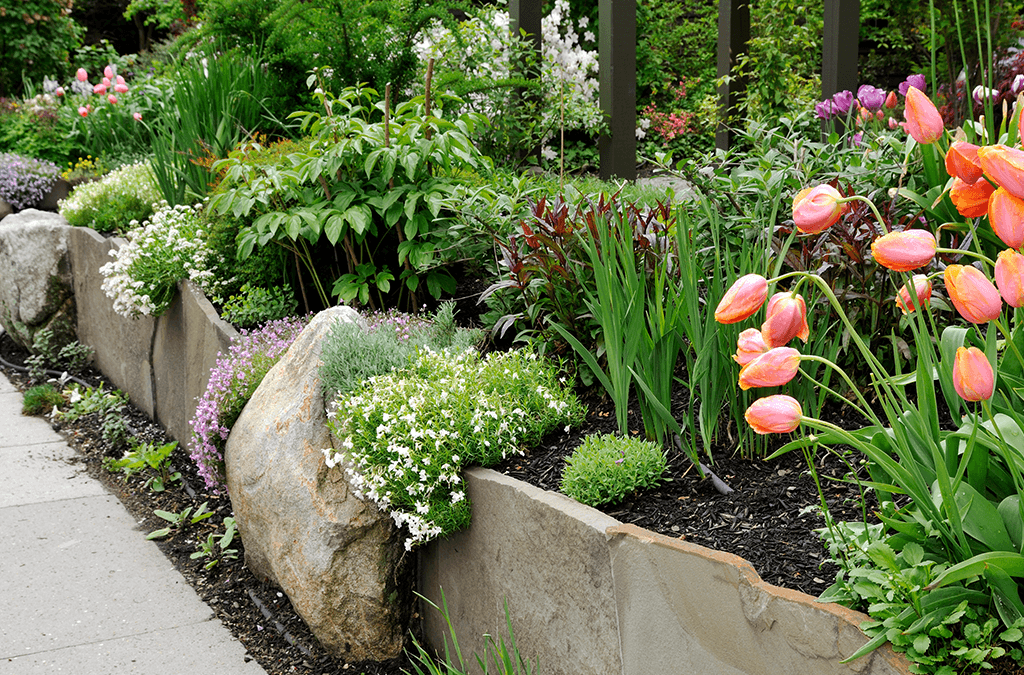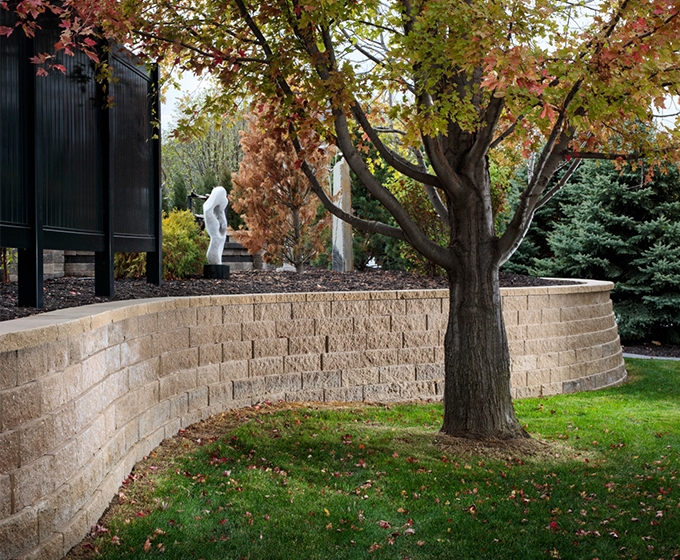The Definitive Guide to Retaining Wall And Garden Wall Construction
Wiki Article
The Best Guide To Retaining Wall And Garden Wall Construction
Table of ContentsUnknown Facts About Retaining Wall And Garden Wall ConstructionThe Only Guide to Retaining Wall And Garden Wall ConstructionRetaining Wall And Garden Wall Construction Can Be Fun For EveryoneIndicators on Retaining Wall And Garden Wall Construction You Need To KnowThe smart Trick of Retaining Wall And Garden Wall Construction That Nobody is Discussing
If this slope is not controlled, the wall surface will relocate or stop working. Rain that escapes the top of a keeping wall can harm the soil as well as plants on either side, deteriorating them away. Water drainage systems divert this water from susceptible areas, minimizing the effect to the structure and its surroundings.
Fill it with crushed stone or crushed rock. All preserving wall surfaces must consist of drain stone also if a draining pipes pipe is not required. Place filter textile over the drain stone and listed below the topsoil. That stops fine material and also natural matter from clogging up the water drainage rock. If your keeping wall requires a drain pipe, make certain the pipeline has slots on all sides, not just one.
The smart Trick of Retaining Wall And Garden Wall Construction That Nobody is Discussing
Clay or various other poor draining dirts lag the wall. There are buried water sources within 50 feet of the preserving wall place 5. There are electrical outlet alternatives for your drainage pipe. Whichever one you select, position an outlet a minimum of every 30 to 50 feet along the wall. Badly drain will reduce the life of your preserving wall surface.

Fabricated wall used for supporting soil in between 2 various altitudes Retaining wall surfaces are fairly rigid wall surfaces used for supporting soil laterally to make sure that it can be retained at different levels on both sides. Maintaining wall surfaces are frameworks made to limit dirt to an incline that it would certainly not normally maintain to (generally a steep, near-vertical or vertical slope).
Excitement About Retaining Wall And Garden Wall Construction
A retaining wall surface is created to hold in place a mass of planet or the like, such as the edge of a balcony or excavation.These are cantilevered from a ground as well as surge above the quality on one side to keep a greater level quality on the opposite side. The wall surfaces should stand up to the lateral stress generated by loosened soils or, in some instances, water pressures. Every maintaining wall sustains a "wedge" of dirt. The wedge is defined as the dirt which extends beyond the failing plane of the soil type present at the wall surface site, and also can be calculated when the dirt friction angle is understood. Retaining Wall And Garden Wall Construction.

This reduction reduces the pressure on the retaining wall. One of the most vital factor to consider in appropriate style and installation of retaining wall surfaces is to identify as well as counteract the tendency of the preserved product to relocate downslope as a result of gravity. This develops side earth pressure behind the wall surface which relies on the angle of interior friction (phi) and also the natural stamina (c) of the kept product, along with the direction and size of motion the keeping framework goes through.
All about Retaining Wall And Garden Wall Construction
Numerous sorts of keeping walls Building and construction types of gravity retaining walls Gravity walls depend upon their mass (stone, concrete or other hefty product) to stand up to stress from behind and may have a 'batter' obstacle to boost security by leaning back towards the retained soil. For brief landscaping wall surfaces, they are often made from mortarless rock or segmental concrete devices (stonework devices).These wall surfaces cantilever lots (like a light beam) to a big, architectural footing, converting horizontal stress from behind the wall surface to upright stress on the ground below. Often cantilevered wall surfaces are upheld on the front, or include a counterfort on the back, to improve their strength standing up to high lots. Buttresses are brief wing wall surfaces at ideal my latest blog post angles to the primary pattern of the wall. Diaphragm walls are costly walls, yet they save time and also area, and therefore are utilized in city buildings. Sheet pile keeping wall surfaces are typically made use of in soft soil and also tight rooms.
:max_bytes(150000):strip_icc()/greg-lois-nunes--o7ASOHDV9E-unsplash-a608a54ec6024b6a90f3cf64ac90c3f6.jpg)
Retaining Wall And Garden Wall Construction Things To Know Before You Get This
A secured retaining wall can be built Find Out More in any one of the aforementioned styles however additionally includes additional stamina making use of cable televisions or various other stays anchored in the rock or soil behind it. Usually driven right into the material with boring, anchors are then broadened at the end of the cord, either by mechanical methods my explanation or typically by infusing pressurized concrete, which increases to create a light bulb in the soil.Report this wiki page